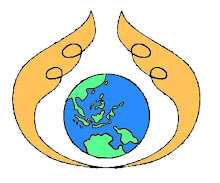Published in Phil. Daily Inquirer-Sunday (July 16, 2006)
A little known fact is that the number of mosques in Metro Manila is 115, and counting.
That's how far and wide the Filipino Muslim community has spread into the capital-- a point to consider by those who still think building bridges between Muslims and Christians remains a largely "Mindanao" issue.
But one group has long recognized the scale of this South-to-North migration, and has worked in the last three years to reduce the social friction that often ensues whenever an Ali or a Muhammad moves into the neighborhood of the Cruzes and Santoses.
Through the Peacemakers' Circle Foundation, Inc. (PCFI), interfaith dialogues and other conflict-prevention initiatives are being held not only in the war-torn areas of Mindanao but also in the very places where displaced Muslims have settled-- but are not exactly welcome.
The PCFI found one such place in Barangay 188, Phase 12, in Tala, Caloocan City, where roughly 20 percent of the 5,000-plus resident families are Muslim.
Suburban tension
In a documentary video launched last Wednesday, PCFI founder and executive director Marites Africa depicted the village as an example of the suburban tension that could arise among residents of different faiths.
The 40-minute video does not show any street riot, verbal spat. or violent image, but is nonetheless disturbing: Christian residents of Tala say on camera what they generally think of the Muslims in their midst.
"I'm afraid of them," confides one woman.
For two male residents, the Muslims are "probably members of the Abu Sayyaf" ans "connected to the terrorists."
Without their knowing, these locals have provided a face to published surveys ans studies showing how anti-Muslim biases persist in workplaces, schools, and communities at large.
Neither did the Muslim residents interviewed for the documentary hide their own sentiments toward Christians.
"We came here to look for jobs, not for trouble," says a man who moved to Tala in the 1990's. "But our neighbors think we're up to no good, and I feel that if they can actually make a petition for us to leave, they would have done so long ago."
A Muslim housewife says her husband, who had managed to find a job as a security guard, was fired because his employers began "suspecting him to be a rebel."
A Muslim convert identified in the video as Yusuf complains that "everywhere we go, it is thought that we bring criminality along with us."
A woman named Hannah says that whenever she leaves the house wearing a viel, she can hear behind her back people calling her a "madre (nun)" or an "Abu Sayyaf."
Nightly gunfire
Africa, a candidate for a master's degree in theology at the Ateneo de Manila University, later shared with the Inquirer other realities about Barangay 188 that the videoi may not have captured.
Before the PCFI conducted projects there, she said, the village had become a place that "tricycles dared not enter" and where residents were afraid of being outdoors after dark.
"Gunfire could be heard almost nightly," she said. "Street crimes were rampant but mostly went unreported to the police."
On top of that, she said, the ridos and clan wars among the Muslims themselves occasionally erupted in the area, adding to its notoriety.
for two years starting October 2003, the PCFI conducted weekly interfaith dialogue for both Muslim and Christian residents who were interested.
Aside from these forums that mainly deal with religion, there was a separate monthly session on building relationships, "fear management," or livelihood skills.
Values and ideals
The interfaith talks were held every Friday and attendance was irregular, but Africa said she counted at least 38 adult residents, 60 percent of them Muslim, who consistly showed up.
Discussions mainly revolved around the "values and ideals" shared by Islam ans Christianity, as well as their differences.
How come Muslims don't eat pork?" How do [the two faiths] differ with regard to marriage? Who is Jesus for the Christians ans for the Muslims? Things like that," Africa said in reference to the points of discussion.
After two years of dialogue, Barangay 188 is now "a better place," she reported. "It s more peaceful. Tricycles are no longer afraid to enter."
And since neighbors of both faiths had also been taught how to organize, they gained better representation before the local government and were able to secure more street lights ans a steady water supply, Africa said.
You have to remove that fear and bring the goodness out of people," she said, as though summing up the PCFI's work at Tala.
For the first time
The video launched last week-- titled "In the Light of the Crescent Moon"-- was a PCFI project in partnership with the Office on Muslim Affairs (OMA)- National Capital Region.
Among its closing images is that of a Christian woman entering a mosque "for the first time in my life" -- and being visibly thrilled with the experience.
Another shot shows a Muslim woman teaching a Christian neighbor how to wear the malong.
"Problems of conflict and violence [between Muslims and Christians] don't only come from Mindanao. Though much have been done over there, in our desire to be more proactive we are also taking the effort to Metro Manila," Africa said.
